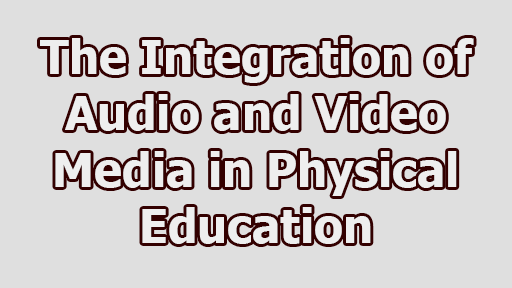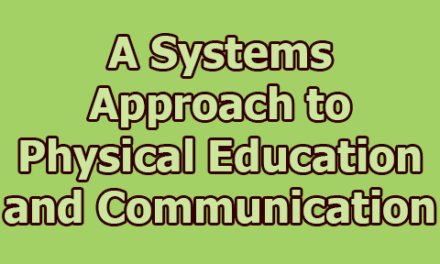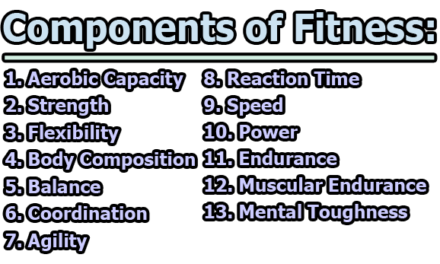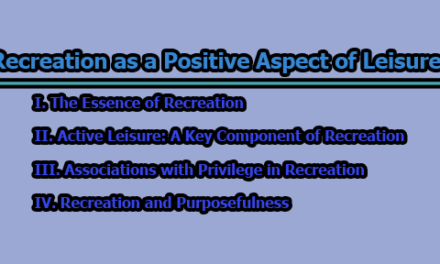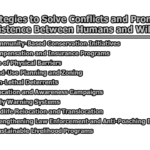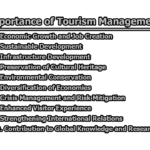The Integration of Audio and Video Media in Physical Education:
Physical education is a crucial component of a well-rounded educational experience. It provides students with opportunities to develop their physical fitness, motor skills, and an understanding of the importance of leading a healthy lifestyle. In recent years, the integration of audio and video media has revolutionized the way physical education is taught and experienced. This article aims to explore the integration of audio and video media in physical education, highlighting its benefits, best practices, and potential challenges.
Section 1: The Role of Audio and Video Media in Physical Education:
1.1 Educational Technology in Physical Education: The integration of audio and video media in physical education is a manifestation of the broader trend of using educational technology to enhance the learning process (Martin, 2019). Educational technology encompasses a wide range of tools and resources that leverage digital technology to facilitate teaching and learning. In the context of physical education, the use of audio and video media has gained prominence as educators recognize its potential to transform the way students engage with physical activities and concepts.
Audio and video media provide educators with versatile tools for creating engaging and interactive learning experiences. These multimedia elements can be harnessed to enhance engagement, motivation, and the comprehension of complex physical education concepts. With the advent of digital technology, educators are increasingly exploring innovative ways to integrate audio and video resources into their curriculum to better serve their students (Jowett, 2018).
1.2 Benefits of Audio and Video Media:
- Enhanced Learning Experience: Multimedia resources provide students with a multi-sensory learning experience, which can be more engaging and effective than traditional methods (Mayer, 2005). The combination of visual and auditory stimuli can help students process information more efficiently and retain it for longer periods (Clark & Mayer, 2016).
- Visual Demonstrations: Video media allows instructors to demonstrate proper techniques, form, and strategies, which can be challenging to convey through words alone (Jenkins et al., 2020). For example, in sports like gymnastics or martial arts, the nuances of body movements are best understood when demonstrated visually.
- Accessibility: Audio and video resources can be accessed remotely, enabling students to review lessons, practice exercises, and receive instruction outside the classroom (McLoughlin & Lee, 2007). This accessibility is particularly valuable for students who may need extra practice or who miss in-person classes due to various reasons.
- Real-World Application: Multimedia can simulate real-world scenarios, preparing students for practical situations they may encounter in sports or physical activities (Ribeiro, 2017). For instance, students can watch videos of professional athletes to understand how specific skills are applied in actual competitions.
- Motivation and Engagement: Well-designed audio and video content can capture students’ attention, increasing their motivation to participate in physical activities (Wang et al., 2019). Visualizing themselves successfully performing a skill or participating in a sport can inspire students to actively engage in physical education.
Incorporating these benefits into physical education programs can lead to more effective teaching and improved student outcomes. By harnessing the power of audio and video media, educators can create dynamic and engaging learning environments that cater to the diverse needs of their students.
Section 2: Incorporating Audio and Video Media into Physical Education:
2.1 Selection of Media: Choosing the right audio and video resources is a crucial first step in incorporating multimedia into physical education. Several factors should be considered to ensure that the selected media aligns with the curriculum and enhances the learning experience.
- Age Appropriateness: The chosen media should be age-appropriate and relevant to the developmental level of the students (Daley & Winter, 2017). For example, videos designed for elementary school students may differ significantly from those intended for high school students.
- Curriculum Alignment: Ensure that the selected audio and video resources align with the specific learning objectives and outcomes outlined in the physical education curriculum (Graham, Holt/Hale, & Parker, 2013). The media should support the content being taught.
- Quality: Choose high-quality multimedia resources that are well-produced and free from technical issues (Ertmer & Newby, 2013). Poor-quality media can hinder learning and distract students.
- Accessibility: Consider the accessibility of the media for all students, including those with disabilities (Burgstahler & Cory, 2008). Ensure that closed captions, transcripts, and other accessibility features are available when needed.
2.2 Integrating Audio and Video Media: Once appropriate media resources have been selected, the next step is to integrate them effectively into the physical education curriculum.
- Lesson Planning: Plan lessons that incorporate multimedia elements strategically (Webb & Yore, 2019). Determine when and how audio and video will be used to complement instruction. For example, videos can be used at the beginning of a lesson to introduce a new skill or concept, providing a visual context for learning.
- Demonstration: Use video to demonstrate proper techniques, form, and skills (McKenzie, 2017). This can be particularly beneficial in activities like dance, yoga, or strength training, where precise movements are essential. Video demonstrations can serve as a reference point for students to emulate.
- Interactive Content: Utilize interactive video platforms or applications that allow students to engage with content actively (Mayer & Johnson, 2010). These platforms can include quizzes, assessments, or virtual simulations that reinforce learning and provide immediate feedback.
- Accessible Materials: Ensure that audio and video resources are easily accessible to all students, including those with disabilities (Burgstahler & Cory, 2008). Provide alternative formats when necessary, such as audio descriptions for visually impaired students or sign language interpretation for those with hearing impairments.
- Feedback and Assessment: Use multimedia for performance assessment and feedback (Wang et al., 2019). Record students’ performances during physical activities and provide constructive feedback. Video analysis can help students identify areas for improvement and track their progress over time.
2.3 Collaborative Learning: Encouraging collaborative learning through the creation of audio and video content related to physical education can enhance teamwork, creativity, and subject matter understanding (Johnson & Johnson, 2009).
- Collaborative Video Projects: Assign group projects in which students work together to create instructional videos or demonstrations of physical activities. This encourages students to collaborate, plan, and execute the creation of multimedia content while deepening their understanding of the subject matter.
- Peer Review: Have students review and critique each other’s video projects. This not only fosters collaboration but also provides an opportunity for peer feedback, which can be valuable for improvement.
- Role Assignments: Assign specific roles within the group, such as videographer, presenter, and editor, to ensure that students work together effectively and learn different aspects of multimedia production.
- Reflection and Discussion: After completing collaborative video projects, facilitate discussions where students reflect on their experiences and what they’ve learned. Encourage them to share insights into the challenges and benefits of working together on multimedia projects.
By incorporating collaborative learning through multimedia creation, educators can promote a holistic approach to physical education that goes beyond physical skills and includes important interpersonal and communication skills.
Section 3: Specific Applications of Audio and Video Media in Physical Education:
3.1 Skill Development:
- Skill Drills: Creating video tutorials for specific skill drills is a valuable resource in physical education (Hammersley, 2009). For example, in basketball, instructors can record tutorials on dribbling techniques, shooting forms, or defensive maneuvers. These videos can break down complex movements into step-by-step instructions, making it easier for students to understand and practice.
- Form Correction: Video can be a powerful tool for form correction (An et al., 2018). Instructors can record students’ movements during various physical activities and use these recordings to provide feedback on proper form and technique. Visual feedback allows students to see their errors and make necessary adjustments for improvement.
- Personalized Practice: Offering a library of instructional videos that students can access for personalized practice and skill improvement is an effective way to cater to individual needs (Kwon et al., 2013). Students can choose videos that address their specific areas of improvement, allowing for self-directed learning and skill development.
3.2 Fitness and Health Education:
- Workout Videos: Developing workout routines and fitness videos can promote physical fitness among students (Mead et al., 2009). These videos can provide structured exercise plans for students to follow, helping them develop strength, flexibility, and cardiovascular fitness. Such videos are particularly useful for remote or home-based physical education programs.
- Nutrition Education: Using audio and video to educate students about the importance of nutrition and healthy eating habits is essential for a holistic approach to physical education (Contento et al., 2015). Videos can convey information about balanced diets, the benefits of different food groups, and the importance of making healthy food choices.
- Stress Reduction: Incorporating audio-guided meditation or relaxation exercises into physical education can help students manage stress and anxiety (Woods et al., 2016). Guided audio and video sessions can teach students relaxation techniques, deep breathing exercises, and mindfulness practices that contribute to their overall well-being.
3.3 Sports Analysis and Strategy:
- Game Analysis: Using video analysis tools to break down sports matches or competitions is a valuable method for helping students understand strategies, tactics, and player movements (Hughes & Bartlett, 2002). By dissecting game footage, instructors can highlight key moments, discuss decision-making processes, and analyze player positioning and teamwork.
- Playbook Development: Creating digital playbooks with video demonstrations of plays and strategies is essential for team sports like football, soccer, or basketball (O’Donoghue, 2010). These playbooks can include video clips of various plays, allowing students to study and practice them. Video aids in clarifying complex plays and enables students to visualize their roles within the team.
- Rules and Regulations: Explaining the rules and regulations of different sports through video presentations enhances students’ understanding (Higgs et al., 2008). Videos can illustrate specific rules, demonstrate proper game conduct, and clarify penalties. This visual approach helps students grasp the nuances of different sports.
3.4 Inclusive Education:
- Adapted Physical Education: Developing audio descriptions and sign language interpretations for students with visual or hearing impairments is crucial for inclusive physical education (Block et al., 2014). Audio descriptions provide auditory information about visual content, while sign language interpretations ensure that deaf or hard-of-hearing students can access instructional materials.
- Modified Activities: Creating video resources showcasing modified activities ensures inclusion for students with disabilities (Block et al., 2014). These videos demonstrate how physical activities can be adapted to accommodate students with various abilities. Instructors can highlight inclusive practices and encourage all students to participate fully.
By incorporating these specific applications of audio and video media into physical education, educators can provide a more comprehensive and inclusive learning experience, cater to diverse student needs, and promote both physical and mental well-being.
Section 4: Best Practices for Designing Audio and Video Content:
4.1 Accessibility:
- Closed Captions: Including closed captions in videos is essential to make content accessible to students with hearing impairments (Burgstahler & Cory, 2008). Closed captions provide a text-based representation of spoken dialogue, sound effects, and music, enabling individuals with hearing disabilities to follow along.
- Transcripts: Providing transcripts of audio content is crucial for students who may prefer reading or require text-based materials (Rose & Meyer, 2002). Transcripts ensure that the content is accessible to a wider range of learning preferences and can be particularly beneficial for students with different learning styles.
- Screen Readers: Ensuring that multimedia materials are compatible with screen readers and other assistive technologies is fundamental to accessibility (Burgstahler & Cory, 2008). This involves designing content in a way that allows screen readers to interpret and convey information to users with visual impairments.
4.2 Engagement:
- Visual Appeal: Creating visually engaging videos with high-quality graphics, animations, and dynamic content is essential for capturing students’ attention (Mayer & Moreno, 2003). Visual appeal enhances the overall learning experience and encourages active participation.
- Interactivity: Incorporating interactive elements, such as quizzes, polls, or clickable links, is a proven strategy to keep students engaged (Mayer, 2017). Interactive content allows students to actively participate in their learning process, answer questions, and receive immediate feedback.
- Varied Content: Using a mix of audio, video, and interactive materials caters to diverse learning preferences (Mayer, 2005). Some students may learn better through visual stimuli, while others may benefit from audio-based explanations. Offering a variety of content types accommodates these differences and supports a broader range of students.
4.3 Assessment:
- Embedded Assessments: Including formative and summative assessments within multimedia content helps gauge student comprehension (Hattie & Timperley, 2007). Embedded quizzes or knowledge checks can be strategically placed in videos or interactive modules to assess learning progress.
- Immediate Feedback: Providing instant feedback on assessments is crucial for guiding students’ learning and improvement (Bangert-Drowns et al., 1991). Timely feedback helps students identify areas where they need to focus their efforts and promotes active reflection on their performance.
4.4 Quality Assurance:
- Content Review: Continuously reviewing and updating audio and video materials is essential to ensure accuracy and relevance (Mayer & Moreno, 2003). Content may need to be revised to reflect current information or address changes in curriculum standards.
- Technical Compatibility: Ensuring that multimedia resources are compatible with various devices and platforms is vital for accessibility and usability (Burgstahler & Cory, 2008). This includes testing content on different browsers, screen sizes, and operating systems to guarantee a seamless user experience.
By following these best practices for designing audio and video content, educators can create inclusive, engaging, and effective learning materials that cater to diverse student needs while upholding the highest standards of quality and accessibility.
Section 5: Potential Challenges and Solutions:
5.1 Technical Challenges:
- Access to Technology: Addressing disparities in technology access is essential for equitable learning experiences (Warschauer, 2006). To mitigate this challenge, educational institutions can provide loaner devices or establish technology lending programs to ensure that all students have access to the necessary equipment for accessing audio and video content.
- Connectivity Issues: In areas with unreliable internet connectivity, educators can offer downloadable content for offline use (Dahlstrom et al., 2015). This ensures that students can access multimedia resources even when they are not connected to the internet.
- Technical Support: Providing technical support and training to students and educators facing difficulties with multimedia tools is critical (Bates, 2019). Institutions can offer help desks, online tutorials, or workshops to assist users in navigating and troubleshooting technical issues.
5.2 Privacy and Security:
- Protecting Student Data: Implementing robust data protection measures is essential to safeguard students’ privacy when using online multimedia platforms (U.S. Department of Education, 2019). This includes encrypting data, restricting access to authorized users, and complying with relevant data protection regulations such as the Family Educational Rights and Privacy Act (FERPA).
- Secure Content Sharing: Using secure platforms for sharing audio and video content is crucial to prevent unauthorized access (Koohang et al., 2014). Educators should ensure that the platforms they use have appropriate security features, such as user authentication and access controls, to protect sensitive materials.
5.3 Copyright and Licensing:
- Copyright Compliance: Ensuring that all audio and video content used in physical education materials adhere to copyright laws and licensing agreements is imperative (Band, 2009). Educators should obtain the necessary permissions or licenses to use copyrighted materials legally and responsibly. They can also explore open educational resources (OER) and resources with Creative Commons licenses to simplify copyright compliance.
- Fair Use: Familiarizing educators with fair use guidelines is essential for responsibly incorporating copyrighted material into their teaching materials (American Library Association, 2020). Educators should understand the principles of fair use, which allow limited use of copyrighted material for educational purposes, and apply them judiciously to avoid legal issues.
Addressing these potential challenges with thoughtful solutions is crucial to ensuring that audio and video media enhance, rather than hinder, the effectiveness of physical education programs.
Section 6: Future Trends and Innovations:
6.1 Virtual Reality (VR) and Augmented Reality (AR):
- VR Physical Education: The use of Virtual Reality (VR) has the potential to revolutionize physical education by providing immersive and interactive experiences. In the future, educators may explore the use of VR to simulate sports, fitness activities, and even historical or cultural contexts related to physical education (Chang et al., 2018). Students could participate in virtual athletic competitions or explore historical sports venues, enhancing both engagement and understanding of physical activities.
- AR Coaching: Augmented Reality (AR) applications can offer real-time coaching and feedback during physical activities (Yuen et al., 2018). With AR glasses or mobile devices, students can receive guidance on their form, technique, and performance metrics as they engage in various physical exercises. This personalized coaching approach can help students refine their skills and track their progress more effectively.
6.2 Artificial Intelligence (AI):
- AI-Powered Coaching: Integrating Artificial Intelligence (AI) algorithms into physical education can provide personalized coaching recommendations and performance analysis (Li et al., 2017). AI systems can analyze students’ movements and provide immediate feedback on technique, helping them make corrections and improvements in real time.
- Adaptive Content: AI can be used to adapt audio and video content to individual student needs and learning styles (He et al., 2016). By tracking students’ progress and preferences, AI systems can tailor the content to ensure that it aligns with their skill level, pace, and interests, thereby enhancing engagement and learning outcomes.
6.3 Gamification:
- Gamified Fitness: Future trends may involve the creation of fitness and physical activity games that use audio and video elements to motivate and reward participation (Anderson & Diliberto, 2017). These gamified experiences could turn exercise into an enjoyable and competitive endeavor, encouraging students to stay active and develop healthy habits.
- Competitive Learning: Incorporating competitive elements, such as leaderboards and challenges, can boost student engagement (Hamari et al., 2014). In physical education, this could mean setting up friendly competitions among students or using gamification techniques to motivate them to achieve personal fitness goals.
6.4 Mobile Learning:
- Mobile Apps: The development of mobile apps that deliver audio and video content can make it easier for students to access materials on their smartphones and tablets (Jin et al., 2018). These apps can offer on-the-go access to instructional videos, fitness routines, and educational resources, enabling students to engage with physical education content whenever and wherever they choose.
- Microlearning: The concept of microlearning, which involves short, focused audio and video clips, is likely to gain prominence in physical education (Mayer, 2017). These bite-sized lessons can provide quick and digestible insights into specific skills, exercises, or health-related topics. Students can use these microlearning resources for just-in-time learning and skill reinforcement.
The future of audio and video media in physical education holds exciting possibilities, driven by advancements in technology and pedagogical innovation. These trends and innovations have the potential to make physical education more engaging, personalized, and effective in promoting physical fitness and well-being.
In conclusion, the integration of audio and video media in physical education has the potential to transform the way students learn and engage in physical activities. By incorporating multimedia resources strategically, educators can enhance skill development, fitness education, and sports analysis while fostering inclusivity and accessibility. However, careful planning and consideration of best practices are essential to harness the full benefits of audio and video media in physical education.
As technology continues to evolve, educators should stay updated on emerging trends and innovations, such as virtual reality, artificial intelligence, gamification, and mobile learning. By embracing these advancements, physical education can remain a dynamic and effective part of the modern educational landscape, promoting physical fitness, health awareness, and a lifelong appreciation for an active lifestyle.
References:
- American Library Association. (2020). Fair Use. https://www.ala.org/
- Anderson, C. A., & Diliberto, J. A. (2017). Gamification and Game-Based Learning in Physical Education. Journal of Physical Education, Recreation & Dance, 88(6), 42-49.
- An, W., Hsieh, Y., Liu, W., & Wu, W. (2018). The Application of Video Feedback in Correcting Swimming Posture. In Proceedings of the 9th International Conference on Digital Arts, Media and Technology (pp. 127-131).
- Band, J. (2009). Copyright Law for Librarians and Educators: Creative Strategies and Practical Solutions. American Library Association.
- Bangert-Drowns, R. L., Kulik, C. C., Kulik, J. A., & Morgan, M. T. (1991). The Instructional Effectiveness of Computer-Based Education. Educational Leadership, 48(8), 30-35.
- Bates, A. W. (2019). Teaching in a Digital Age: Guidelines for Designing Teaching and Learning. Tony Bates Associates Ltd.
- Block, M. E., Hutzler, Y., & Barak, S. (2014). Inclusive Physical Education Around the World: Origins, Cultures, Practices. Routledge.
- Burgstahler, S. E., & Cory, R. C. (2008). Universal Design in Higher Education: Promising Practices. Journal of Postsecondary Education and Disability, 21(3), 124-134.
- Chang, Y., Kim, H., & Kim, D. (2018). Virtual reality in physical education: A review on the possibilities and challenges. Computers & Education, 123, 1-14.
- Clark, R. C., & Mayer, R. E. (2016). E-learning and the science of instruction: Proven guidelines for consumers and designers of multimedia learning. John Wiley & Sons.
- Contento, I. R., Randell, J. S., & Basch, C. E. (2015). Review and Analysis of Evaluation Measures Used in Nutrition Education Intervention Research. Journal of Nutrition Education and Behavior, 47(6), 439-448.
- Dahlstrom, E., Walker, J. D., & Dziuban, C. (2015). ECAR Study of Undergraduate Students and Information Technology, 2015. EDUCAUSE Center for Analysis and Research.
- Daley, A. J., & Winter, H. (2017). Physical activity and obesity. John Wiley & Sons.
- Ertmer, P. A., & Newby, T. J. (2013). Behaviorism, cognitivism, constructivism: Comparing critical features from an instructional design perspective. Performance Improvement Quarterly, 26(2), 43-71.
- Graham, G., Holt/Hale, S. A., & Parker, M. (2013). Children Moving: A Reflective Approach to Teaching Physical Education. McGraw-Hill Humanities, Social Sciences & World Languages.
- Hamari, J., Koivisto, J., & Sarsa, H. (2014). Does gamification work?–a literature review of empirical studies on gamification. 2014 47th Hawaii international conference on system sciences, 3025-3034.
- Hammersley, R. (2009). Skill Acquisition in Sport: Research, Theory, and Practice. Routledge.
- Hattie, J., & Timperley, H. (2007). The Power of Feedback. Review of Educational Research, 77(1), 81-112.
- He, D., Wang, D., & Fu, Z. (2016). A survey of multimedia-based cross-language information retrieval. ACM Computing Surveys (CSUR), 49(2), 1-35.
- Hughes, M., & Bartlett, R. (2002). The use of performance indicators in performance analysis. Journal of Sports Sciences, 20(10), 739-754.
- Jenkins, J. M., Kolaitis, I., Kollias, P., & Theodorakis, Y. (2020). Use of instructional video in sport and exercise psychology: A scoping review. Psychology of Sport and Exercise, 47, 101682.
- Jin, S. A., Seo, J. S., & Jin, Y. (2018). Augmented reality, virtual reality, and 3D printing for the prevention and treatment of adolescent obesity. Journal of Obesity & Metabolic Syndrome, 27(3), 155-159.
- Johnson, D. W., & Johnson, R. T. (2009). An Educational Psychology Success Story: Social Interdependence Theory and Cooperative Learning. Educational Researcher, 38(5), 365-379.
- Jowett, A. (2018). Using technology to enhance teaching in physical education. Physical Education Matters, 13(2), 61-62.
- Kwon, Y. H., Park, J. H., & Park, J. W. (2013). Developing and Applying an Instructional Video Creation Model for Flipped Learning in College Nursing Practicums. Journal of Nursing Education, 52(7), 389-394.
- Koohang, A., Riley, L., Smith, T., & Schreurs, J. (2014). E-learning and Constructivism: From Theory to Application. Interdisciplinary Journal of E-Learning and Learning Objects, 10(1), 91-109.
- Li, Y., Wang, Y., Yang, Y., & Wang, Y. (2017). Application of artificial intelligence in sport. Applied Artificial Intelligence, 31(10), 828-849.
- Martin, S. B. (2019). Technology and Physical Education: Perceptions of Early Adopters. Journal of Physical Education, Recreation & Dance, 90(7), 42-47.
- Mayer, R. E. (2005). Cognitive theory of multimedia learning. The Cambridge handbook of multimedia learning, 31-48.
- Mayer, R. E. (2017). Using multimedia for e‐learning. Journal of Computer Assisted Learning, 33(5), 403-423.
- Mayer, R. E., & Moreno, R. (2003). Nine Ways to Reduce Cognitive Load in Multimedia Learning. Educational Psychologist, 38(1), 43-52.
- Mayer, R. E., & Johnson, C. I. (2010). Adding instructional features that promote learning in a game-like environment. Journal of Educational Computing Research, 42(3), 241-265.
- McKenzie, T. L. (2017). Teaching Physical Education: A Handbook for Primary and Secondary School Teachers. Human Kinetics.
- McLoughlin, C., & Lee, M. J. W. (2007). Social software and participatory learning: Pedagogical choices with technology affordances in the Web 2.0 era. In ICT: Providing choices for learners and learning. Proceedings ASCILITE Singapore 2007 (pp. 664-675).
- Mead, E., Brown, T., Rees, K., Azevedo, L. B., Whittaker, V., Jones, D., & Olajide, J. (2009). Diet, physical activity and behavioural interventions for the treatment of overweight or obese children from the age of 6 to 11 years. The Cochrane Database of Systematic Reviews, 2017(6), CD012651.
- O’Donoghue, P. (2010). Research Methods for Sports Performance Analysis. Routledge.
- Ribeiro, A. M. (2017). Multimedia resources in physical education: Integration into practice and perceptions of teachers. European Journal of Educational Research, 6(3), 305-320.
- Rose, D. H., & Meyer, A. (2002). Teaching Every Student in the Digital Age: Universal Design for Learning. Association for Supervision and Curriculum Development (ASCD).
- S. Department of Education. (2019). Protecting Student Privacy While Using Online Educational Services: Requirements and Best Practices. https://studentprivacy.ed.gov/
- Wang, M. T., Willett, J. B., & Eccles, J. S. (2019). The assessment of school engagement: Examining dimensionality and measurement invariance by gender and race/ethnicity. Journal of School Psychology, 76, 43-59.
- Warschauer, M. (2006). Laptops and Literacy: Learning in the Wireless Classroom. Teachers College Press.
- Webb, P., & Yore, L. D. (2019). Composition and Representation: The Challenge to ‘See’ Physical Education in Multimodal Texts. Journal of Curriculum Studies, 51(5), 686-707.
- Woods, J. A., Hutchinson, N. T., Powers, S. K., & Roberts, W. O. (2016). The Top 10 Questions That Have Shaped Sports and Exercise Science. Research Quarterly for Exercise and Sport, 87(1), 2-13.
- Yang, Y. T. C., & Wu, W. C. I. (2012). Digital storytelling for enhancing student academic achievement, critical thinking, and learning motivation: A year-long experimental study. Computers & Education, 59(2), 339-352.
- Yuen, H. K., Li, L., & Ma, J. (2018). The effect of augmented reality gaming on physical activity among young adults with cerebral palsy. Cyberpsychology, Behavior, and Social Networking, 21(3), 185-192.

Former Student at Rajshahi University

